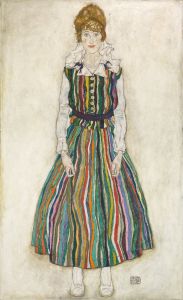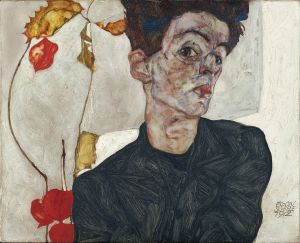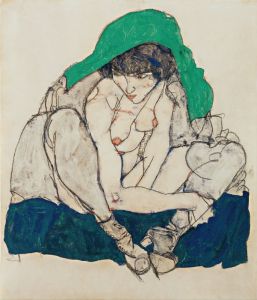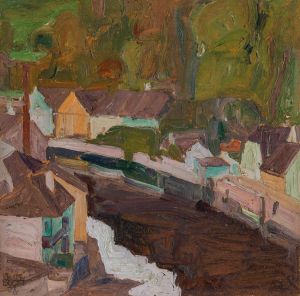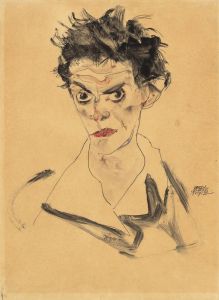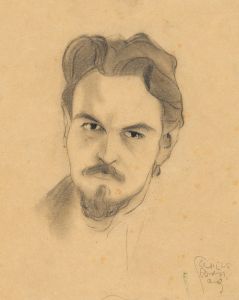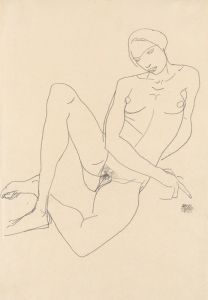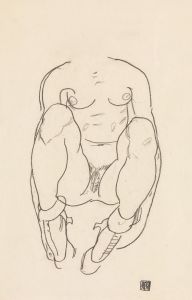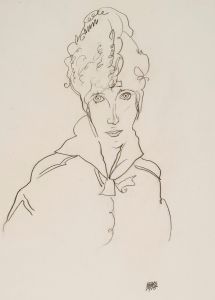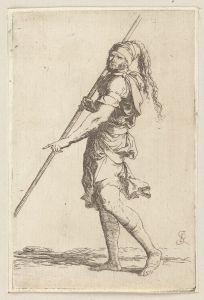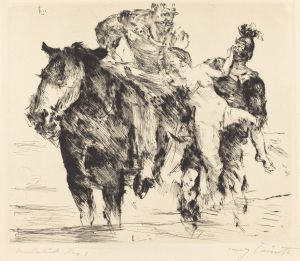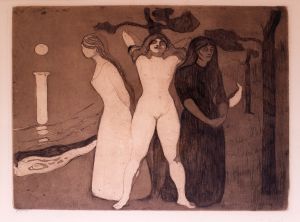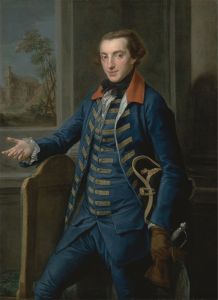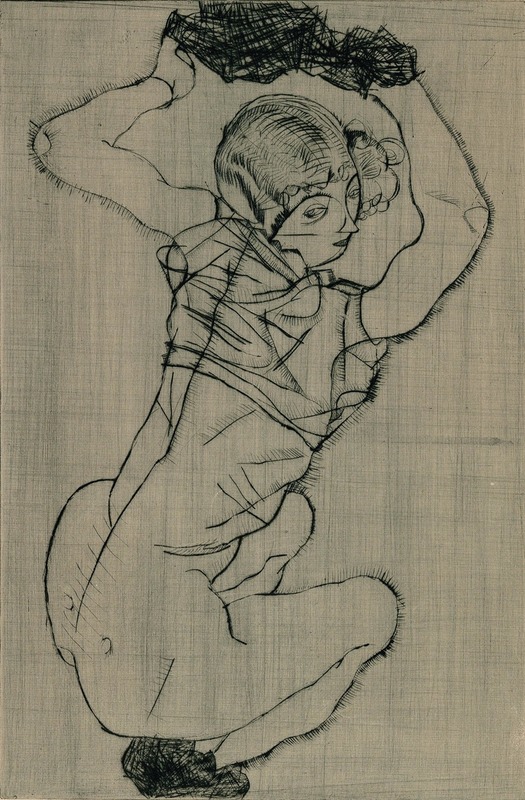
Kauernde
A hand-painted replica of Egon Schiele’s masterpiece Kauernde, meticulously crafted by professional artists to capture the true essence of the original. Each piece is created with museum-quality canvas and rare mineral pigments, carefully painted by experienced artists with delicate brushstrokes and rich, layered colors to perfectly recreate the texture of the original artwork. Unlike machine-printed reproductions, this hand-painted version brings the painting to life, infused with the artist’s emotions and skill in every stroke. Whether for personal collection or home decoration, it instantly elevates the artistic atmosphere of any space.
Egon Schiele, an Austrian painter known for his distinctive style and contribution to early 20th-century art, created the work titled "Kauernde" (translated as "Crouching Woman") in 1918. Schiele, a protégé of Gustav Klimt, was a prominent figure in the Expressionist movement, and his works are characterized by their raw emotional intensity, bold lines, and often provocative subject matter.
"Kauernde" is a compelling example of Schiele's exploration of the human form and psyche. The painting depicts a woman in a crouched position, a pose that Schiele frequently used to convey vulnerability and introspection. The figure's contorted posture and the stark, almost skeletal depiction of her body are typical of Schiele's style, which often emphasized the fragility and complexity of human existence.
The painting is executed with Schiele's characteristic use of line and color. His lines are sharp and angular, creating a sense of tension and movement within the static pose. The color palette is subdued, with earthy tones that enhance the somber mood of the piece. Schiele's use of negative space is also notable, as it draws attention to the figure and adds to the overall sense of isolation and introspection.
Schiele's work, including "Kauernde," often focused on themes of sexuality, existential angst, and the human condition. His art was considered controversial during his lifetime due to its explicit content and psychological depth. However, it is precisely these qualities that have cemented his reputation as a significant and influential figure in modern art.
The year 1918, when "Kauernde" was created, was a pivotal one for Schiele. It marked the end of World War I, a period that had a profound impact on European society and culture. Tragically, it was also the year of Schiele's untimely death at the age of 28, due to the Spanish flu pandemic. Despite his short life, Schiele's artistic output was prolific, and his works continue to be celebrated for their emotional intensity and innovative approach to form and composition.
"Kauernde" is housed in the Leopold Museum in Vienna, which holds one of the largest collections of Schiele's works. The museum is dedicated to Austrian art from the late 19th and early 20th centuries and provides a comprehensive overview of Schiele's artistic development and legacy.
Egon Schiele's "Kauernde" remains a powerful testament to his skill as an artist and his ability to capture the complexities of the human experience. Through his unique style and profound subject matter, Schiele has left an indelible mark on the history of art, influencing countless artists and continuing to resonate with audiences today.





